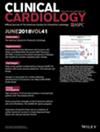Frequency and Impact of Cardiology Evaluation Following Perioperative Myocardial Infarction
Abstract
Background
Perioperative myocardial infarction (PMI) after noncardiac surgery results in significant morbidity and mortality. While comprehensive management, including imaging and guideline-directed medical therapy (GDMT), improves outcomes, utilization of these strategies and the impact of physician evaluation on their utilization are unknown. This study evaluates the frequency of cardiology evaluation after PMI and its association with guideline-recommended care.
Methods
Using IBM MarketScan (2016–2021), we analyzed claims for patients ≥ 45 years old with PMI during or after major noncardiac surgery. We examined the relationship between cardiology evaluation and post-PMI care using three regression models: (1) a Poisson model for GDMT class prescriptions filled within 3 months post-discharge, and logistic models for (2) ischemic testing and (3) echocardiography during hospitalization or within 3 months post-discharge.
Results
Among 5660 patients with PMI (mean age 68, 56.9% male, 27.2% with STEMI), 19% were not evaluated by a cardiologist. Patients with cardiology evaluation were more likely to receive at least one GDMT prescription after PMI (78.8% vs 74.0%, p < 0.001). Cardiology evaluation was also associated with an increased likelihood of ischemic testing (38.2% vs 23.0%, p < 0.001) and echocardiography (75.9% vs 53.6%, p < 0.001).
Conclusion
One in five PMI patients lacks cardiology evaluation, and evaluation is associated with an increased likelihood of recommended management after PMI. Future studies should explore whether cardiology evaluation and management strategies impact patient outcomes.


 求助内容:
求助内容: 应助结果提醒方式:
应助结果提醒方式:


